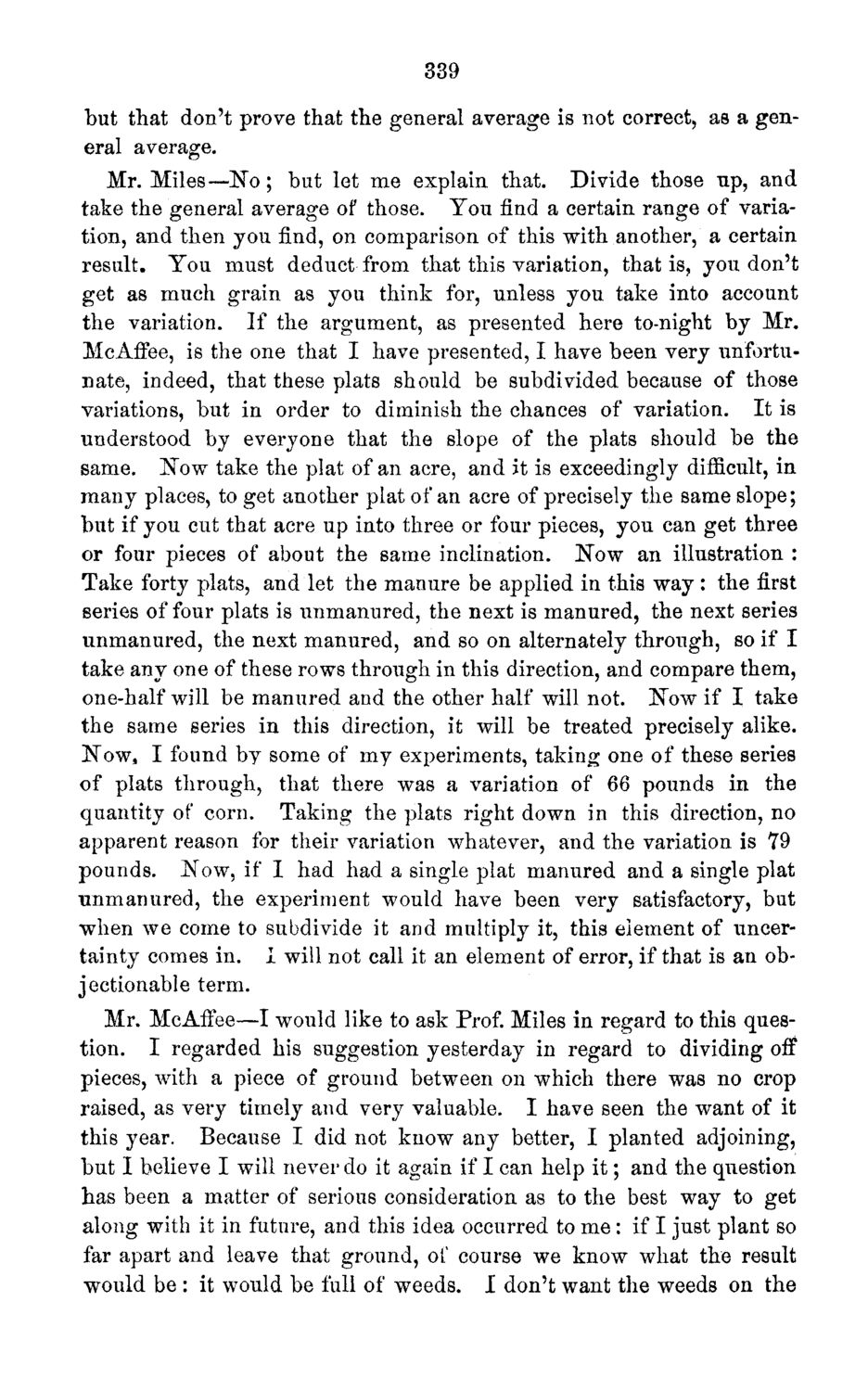| |
| |
Caption: Board of Trustees Minutes - 1871
This is a reduced-resolution page image for fast online browsing.

EXTRACTED TEXT FROM PAGE:
339 but that don't prove that the general average is not correct, as a general average. Mr. Miles—No; but let me explain that. Divide those up, and take the general average of those. You find a certain range of variation, and then you find, on comparison of this with another, a certain result. You must deduct from that this variation, that is, you don't get as much grain as you think for, unless you take into account the variation. If the argument, as presented here to-night by Mr. McAffee, is the one that I have presented, I have been very unfortunate, indeed, that these plats should be subdivided because of those variations, but in order to diminish the chances of variation. It is understood by everyone that the slope of the plats should be the same. Now take the plat of an acre, and it is exceedingly difficult, in many places, to get another plat of an acre of precisely the same slope; but if you cut that acre up into three or four pieces, you can get three or four pieces of about the same inclination. Now an illustration : Take forty plats, and let the manure be applied in this way : the first series of four plats is unmanured, the next is manured, the next series unmanured, the next manured, and so on alternately through, so if I take any one of these rows through in this direction, and compare them, one-half will be manured and the other half will not. Now if I take the same series in this direction, it will be treated precisely alike. Now, I found by some of my experiments, taking one of these series of plats through, that there was a variation of 66 pounds in the quantity of corn. Taking the plats right down in this direction, no apparent reason for their variation whatever, and the variation is 79 pounds. Now, if I had had a single plat manured and a single plat unmanured, the experiment would have been very satisfactory, but when we come to subdivide it and multiply it, this element of uncertainty comes in. I will not call it an element of error, if that is an objectionable term. Mr. McAffee—I wrould like to ask Prof. Miles in regard to this question. I regarded his suggestion yesterday in regard to dividing off pieces, with a piece of ground between on which there was no crop raised, as very timely and very valuable. I have seen the want of it this year. Because I did not know any better, I planted adjoining, but I believe I will never do it again if I can help i t ; and the question has been a matter of serious consideration as to the best way to get along with it in future, and this idea occurred to m e : if I just plant so far apart and leave that ground, of course we know what the result would be : it would be full of weeds. I don't want the weeds on the
| |